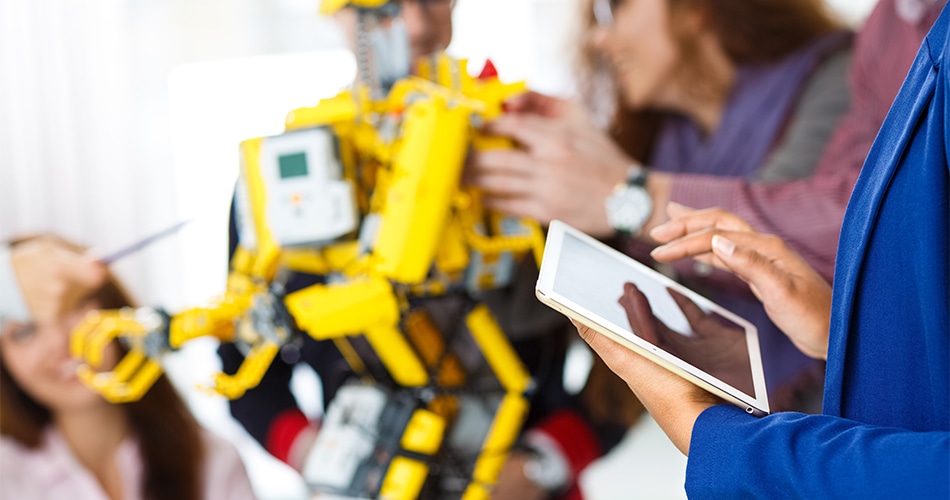
A new interactive software tool created by Carnegie Mellon University's Robotics Institute allows both amateurs and professionals to build custom-made legged or wheeled robots using 3D-printed parts and commercially-available actuators.
Using a common drag-and-drop user interface, individuals can select from a catalogue of parts and place them into their robot design. The system guides users by suggesting parts that will work with each other, and offering up optimal positions of actuators. The system can also produce structural pieces to link up those actuators.
As soon as the robot design is finished, the tool supplies models a physical environment to evaluate the robot before making it, allowing users to iteratively change the design to get a desired appearance or capability.
Stelian Coros, assistant professor of robotics at Carnegie Mellon University, said current processes for making new robotic systems are cumbersome and resource-intensive.
"In the not-so-distant future, however, robots will be part of the fabric of daily life and more people -- not just roboticists -- will want to customize robots,” Coros said in a statement. “This type of interactive design tool would make this possible for just about anybody."
In testing the new system, the CMU team developed a several robots and fabricated two of their designs: a wheeled robot that can hold a pen and a four-legged "dog-bot" that can walk forward or side to side.
Team member Ruta Desai, who will present a report on system at the ICRA robotics conference in this week in Singapore, said her team’s design tool makes it simple to try out several body shapes and motor layouts, and then discover how these choices impact the robot's capacity do various tasks.
"For instance, we discovered in simulation that some of our preliminary designs for the puppy enabled it to only walk forward, not sideways,” she said. “We corrected that for the final design. The motions of the robot we actually built matched the desired motion we demonstrated in simulation very well."
The study team produced models of how actuators, standard brackets and 3D-printable structural elements can be put together to create intricate robotic systems. The iterative design sequence makes it possible for users to try various ideas out by shifting the quantity and placement of actuators and to change the proportions of the robot. The tool includes an auto-completion function that enables it to automatically produce assemblies of parts by searching through viable placements.
Coros said his team’s primary goal was to make robot design more accessible.
"This is important because people who play an active role in creating robotic devices for their own use are more likely to have positive feelings and higher quality interactions with them. This could accelerate the adoption of robots in everyday life."
The new Carnegie Mellon design tool is just one of the many fascinating things being presented at ICRA this week. Another robotics team from ETH Zurich are presenting a robot that is capable of the kind of intuitive building that humans take for granted.
Today’s robots can be easily programmed to build something in a repetitive manner, like laying down bricks to build a wall. However, it is particularly challenging to program a robot that can build a wall out of irregular rocks – each of which must be balanced in place to build the wall.
At ICRA, the ETH Zurich team will present a robot that has the planning and delicate touch necessary to build in an improvisational manner. While the Swiss robot can detect a stone, model its physical dimensions, then grab and place stones, the system does have one major caveat: each stone must be 3D scanned ahead of time so the system can produce a computer simulation before physically stacking rocks.
Source: Making Custom Robots
Image Credit: Shutterstock.com/NestorRizhniak
Disclaimer: The views expressed here are those of the author expressed in their private capacity and do not necessarily represent the views of AZoM.com Limited T/A AZoNetwork the owner and operator of this website. This disclaimer forms part of the Terms and conditions of use of this website.